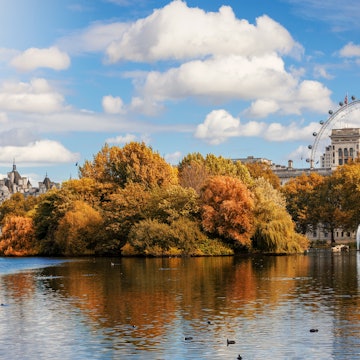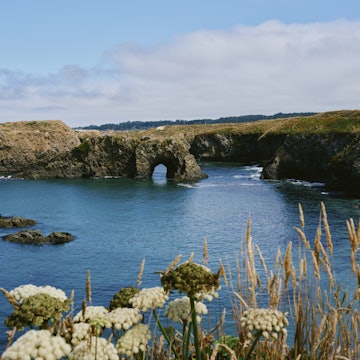

Don't try to cover everything on your first visit to California – it's important to take time to enjoy it © Jordi Salas / Getty Images
As a newbie California resident keen on exploring as much of my adopted home as possible, I was struck by how geographically diverse the Golden State is, the impracticalities of making a "quick trip" to one part of the state from the other end of it, and its surprisingly variable weather.
Gleaned over nearly 20 years of West Coast living, these tips and good-to-knows will help you travel to and within California with ease and confidence. We’ll start with logistics and other practicalities before moving into considerations for booking cultural attractions and activities, and the best way to explore our incredible parks, beaches and mountain regions.
1. Don’t try to cram it all in at once
From frothy coastlines to scenic deserts, expansive mountain ranges, buzzing metropolitan cities and more remote corners, California really has it all. Its terrain covers more than 1000 miles from north to south, and its diversity means there’s always more to explore no matter how much time you have planned.
Consider focusing your trip on a few regions, or planning your trip by theme, such as national and state parks or a coastal road trip along Highway 1.
2. Hone in on your itinerary
A week in the Golden State presents opportunities to combine urban exploration with nearby picturesque jaunts. You could spend several days in San Francisco, then commune with ancient redwoods in Muir Woods another day, before cycling along Half Moon Bay the next. From a home base in Los Angeles or San Diego, a week affords a few overnight stays in Temecula Valley’s wine region, desert vibes in Joshua Tree, or the mountain towns of Big Bear, Idyllwild, and Julian.
3. Prepare to pay more for everything
Californians joke that pricier, well, everything, is the trade-off (colloquially known as the sunshine tax) for our idyllic weather. In other words, there’s a level of acceptance travelers would benefit from before arriving. California has the highest sales tax rate in the country, among others, so be prepared to fork over more than in other states for lodging, food, fuel, entertainment and parking.

4. Pack layers
California is endowed with lots of sunshine, but you may need more than a pair of jeans and a t-shirt to navigate all that the state offers. Pack for colder temps during California’s winter season at elevation, like Mammoth and Tahoe. The coast is typically a bit cooler than inland regions, and generally, a light sweater or jacket may be required once the sun sets.
5. Book campsites in advance
Yosemite’s imposing granite walls and Joshua Tree’s alien-like cacti and dark skies draw millions of travelers to California each year. Secure your spot in these popular parks and book campsites and entrance reservations up to six months in advance. Also, be mindful of seasonality. Reservations for parks in desert regions like Death Valley National Park and Joshua Tree fill up for the winter and early spring months, while coastal campsites book up for summer.
6. Take advantage of accessible attractions
There is always more to be done to ensure everyone experiences all that California offers, and the state continues to consider the needs of individuals with varying physical and cognitive abilities. Disneyland’s Disability Access Service lets eligible guests schedule return times for certain experiences and offers a comprehensive guide detailing each attraction’s sensory features – from loud noises to scents.
Legoland offers a similar program, including an Assisted Access Pass that allows guests to board a first-choice ride without waiting, scheduled times for other rides and designated quiet areas.
Museums offer varying levels of accessibility resources like wheelchairs, assisted listening devices, and more, including Berkeley Art Museum & Pacific Film Archive (BAMPFA), and the Broad, a contemporary art museum in Los Angeles.
Outdoor enthusiasts will find paved paths at beaches like Oxnard Beach Park, and June Lake in the High Sierras. Entire cities are taking action as well. Visalia, a central California city that makes a convenient entry point for Sequoia and Kings Canyon National Parks, was recognized as a Certified Autism Destination.
Many of its hotels and family-friendly attractions meet the criteria to ensure autistic and sensory-sensitive individuals have a comfortable experience. In southern California, Palm Springs tourism organization is pursuing similar efforts to grow the number of its certified attractions, like the Children’s Discovery Museum of the Desert.

7. Seek award-winning dining beyond metropolitan centers
Excellent, award-winning eats are the norm in California’s major cities. But travelers can also find them in its more suburban and sparsely populated parts. You can find Michelin-rated eats at Petiscos, a Portuguese small plates restaurant in San Jose; Bombera, a Mexican restaurant in Oakland; Chez Noir in Carmel-by-the-Sea; Knife Pleat in Costa Mesa; and Valle, a modern Mexican restaurant in Oceanside.
Additionally, James Beard America’s Classics-recognized restaurants highlight delicious home-style cooking in lesser-known parts of California, like Casa Vega in Sherman Oaks, and Pho 79 in Garden Grove.
8. Take advantage of year-round peak produce
California’s farmers markets are a colorful way to scope out what’s fresh and in-season and discover first-hand why its produce is some of the best in the country. Aside from visiting a farm directly, it’s a great way to connect to an industry that cultivates more than a third of the United States’ vegetables and two-thirds of its fruits and nuts. Every market is a little different and likely includes prepared foods and hand-crafted goods, live musical entertainment, and kid-friendly activities.
9. Check out California’s islands
California’s islands are worth their own detour. There’s an island for every adventurer, whether you’re looking for resort-style comforts or seeking something more rustic. Intrepid travelers should consider the rugged Channel Islands, while Catalina Island blends luxury hotels with outdoor adventures. A bridge to Coronado Island in San Diego reveals wide, powdery beaches perfect for building sandcastles and sunbathing in front of a historic Victorian hotel.

10. Respect wildlife and sealife
Occasionally, and though rare, it is possible to catch sight of a mountain lion, coyotes at dawn and dusk, and snakes on the trails. Along beaches and near harbors, it’s also common to glimpse seals and otters. Keep your distance once you notice them, and know that you’re likely too close for comfort if they notice you first. Dial 911 for emergencies, and contact the Department of Fish and Wildlife to report all other incidents.
11. Acknowledge California’s original stewards
Indigenous communities are some of California’s most invaluable stewards of its open, nature-filled spaces. Initiatives and partnerships like Reexamining Our Past Initiative are aimed at better acknowledging and reflecting these communities' history and culture. This entails practical measures such as renaming Sue-meg State Park in Humboldt County, and efforts to expand exhibits that illustrate the native community’s contributions to the area, like Old Town State Historic Park in San Diego.















